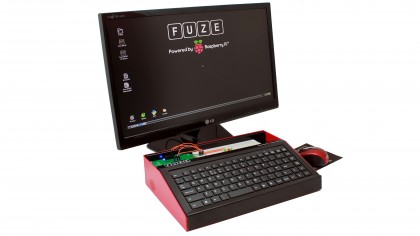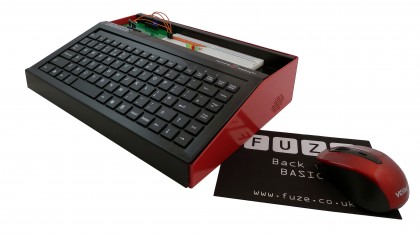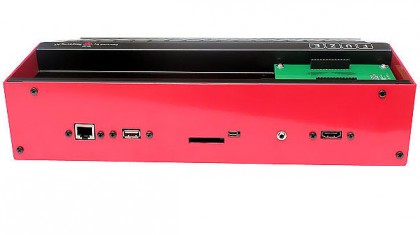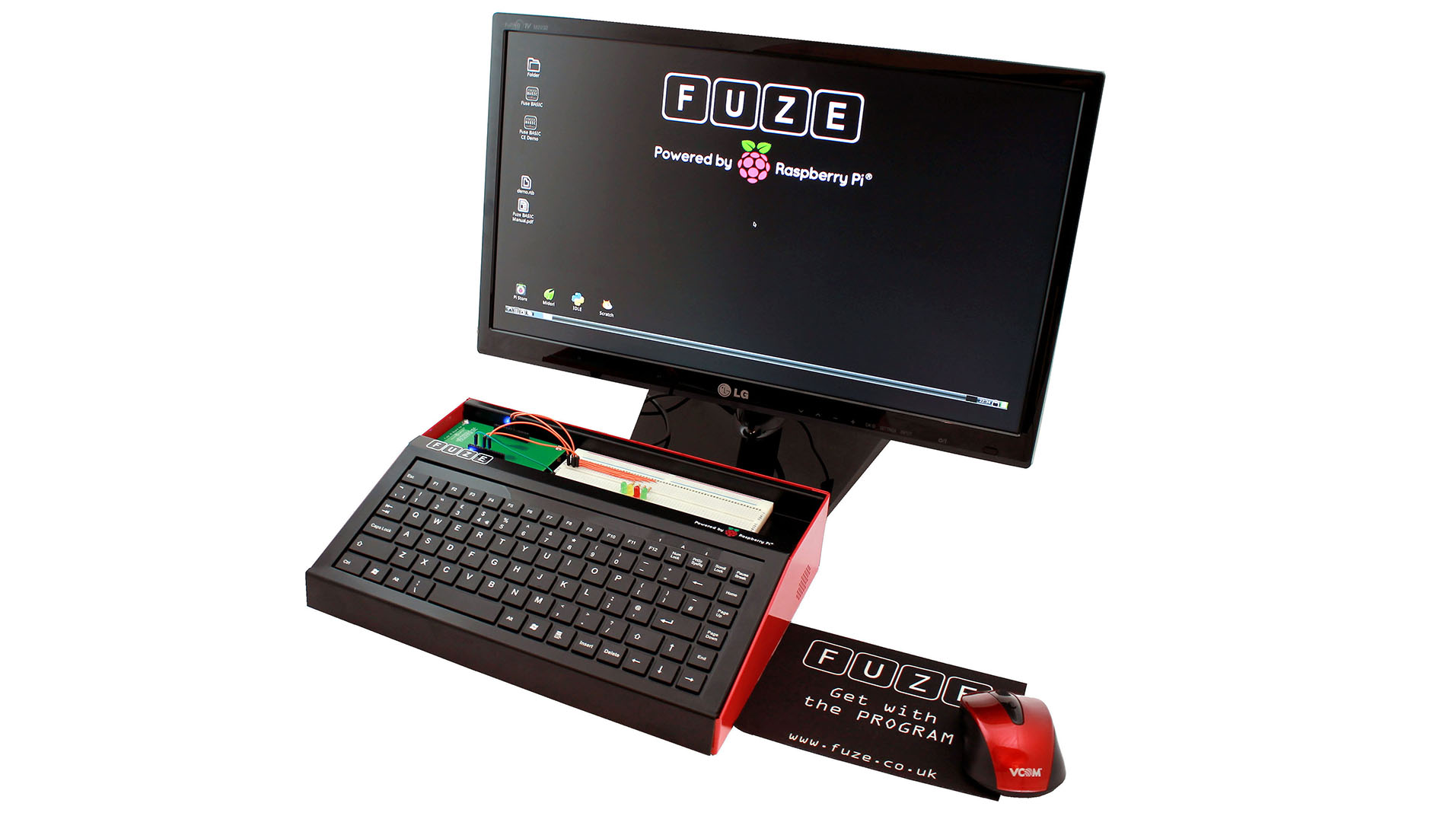TechRadar Verdict
Pros
- +
Solid case
- +
Colourful
- +
Breadboard
- +
Inbuilt keyboard
- +
Programmer's Reference Guide
Cons
- -
Non-standard GPIO
- -
Poor keyboard
- -
No Camera connector
- -
Old-fashioned programming editor
- -
Expensive
Why you can trust TechRadar
The Raspberry Pi, as a quick recap for those of you who dwell under rocks, is a credit-card sized computer that runs Linux and costs around £30.
The Fuze takes this, wraps it in a metal case and adds a keyboard and a breadboard (not the wooden type – see later in the review) to create a more complete package. It also comes with a wireless mouse. You just need to plug it into a HDMI monitor (not included) and you're ready to go.
It comes with a SD card with a modified version of Raspbian (the most popular Linux distro for the Raspberry Pi). There's new artwork for the desktop, a new icon set and a slightly different lineup of applications, but the biggest addition in Fuze's Linux is Fuze BASIC.

A casual glance at the Fuze will evoke nostalgia in readers with fond memories of the BBC Micro (albeit with slightly funkier colours). Fuze BASIC takes this a step further, and creates a similar programming environment. Not only is the syntax similar to the BBC micro's built-in language, it even looks similar with blocky white text on a black screen.
While there are, no doubt, a few BBC Micro aficionados staring dreamy-eyed at this machine, the real focus is on education. To help in this area, the Fuze team is creating project cards to help guide teachers through lessons, and get kids programming in this environment.
These are a key feature of learning to programme with FUZE BASIC. The project cards were provided on an SD card with our unit, and are provided free of charge with the on sale unit.
New Project Cards and electronic projects will be made available from the FUZE website.

Perhaps the biggest departure from the 80s ascetic is the solderless breadboard mounted on the top of the machine. This lets users take the general purpose inputs and outputs (GPIOs) and wire up circuits and control them from Fuze BASIC. The Electronic Projects Component Kit contains a range of wires, LEDs, buttons and resistors as well as a seven-segment display and a buzzer.
Together it makes a fairly complete educational kit centred on the Raspberry Pi board designed to be a one-stop-shop for schools looking to extend their computing facilities with minimum fuss. The alternative would be to build your own system based on smaller cases for the Raspberry Pi and separate peripherals.
Specifications
The beating heart of the Fuze is a Raspberry Pi Model B, so it's powered by a 700MHz (overclockable to 1GHz) ARM11 CPU with 512Mb RAM and a Videocore 4 GPU. Altogether, that adds up to a limited amount of power. It's enough for simple programming and basic tasks, but it struggles on more computationally intensive tasks like installing software and web browsing can be painfully slow on JavaScript-heavy sites.
Most of the connections that are on the Pi itself are accessible from the case. Though only one of the USB ports is available (the other is taken by the keyboard) and this is needed for the mouse, so you'll need a USB hub if you've got any accessories to plug in. The one connection that's completely missing is the one for the camera. Rather disappointingly, the case doesn't allow any method of attaching this.

The GPIOs are accessible through a Fuze IO Board. This has a different layout to the Pi GPIOs and so isn't compatible with any of the Raspberry Pi add ons such as the PiFace or PiLite. Next to the IO board, there's a 840-hole solderless breadboard which provides more than enough space to build circuits with the accompanying component kit.
One of the main selling points of the device is Fuze BASIC. This is a programming language aimed at beginners. It includes some simple methods for drawing and accessing the GPIOs. The device comes with a Programmer's Reference Guide which explains all the features of the language, but it's definitely a reference guide not an introduction to the language, so don't expect to use it to learn to program. For this purpose, there are a range of project cards on the website.
